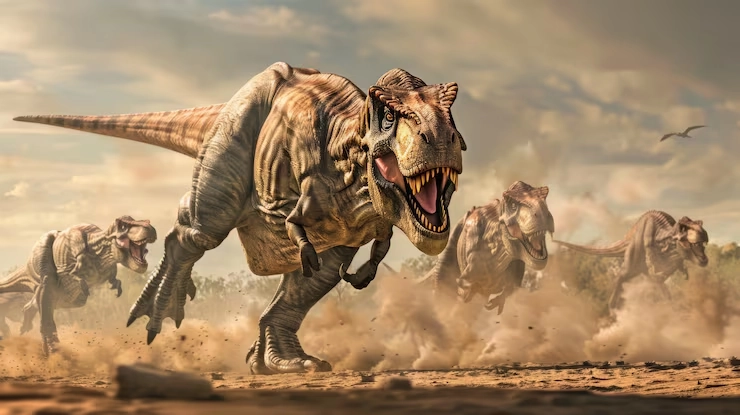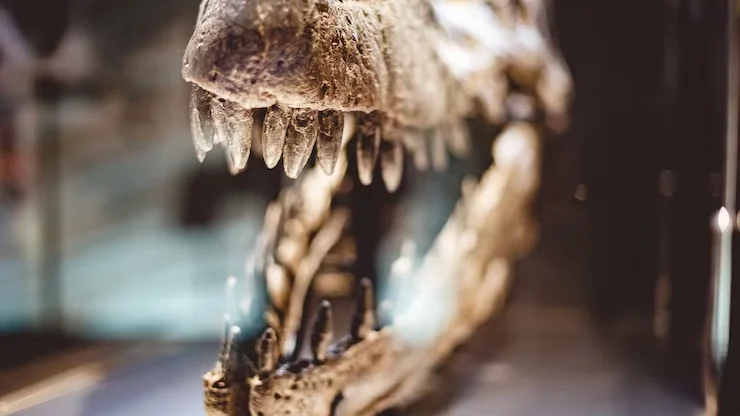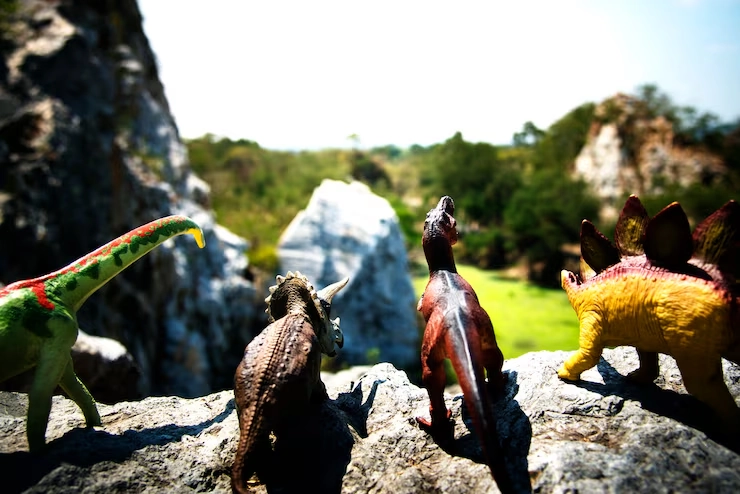Have you ever wondered which dinosaur had the most teeth? One of the most remarkable examples of this is Nigersaurus. Known for its unique tooth structure, this dinosaur had over 500 teeth that were constantly replaced. Here, we take a closer look at Nigersaurus and its jaw-dropping ability to keep its teeth in tip-top shape.
Nigersaurus, a plant-eating dinosaur from the Cretaceous period, had a truly extraordinary set of teeth that set it apart from other dinosaurs. Unlike many herbivores that only had a handful of teeth, Nigersaurus sported more than 500 teeth at a time, arranged in a specialized pattern for constant, efficient grazing. These teeth weren’t just numerous—they were constantly replaced at an incredibly rapid rate, every 14 days, allowing this dinosaur to maintain a perfect set for its low-level feeding habits. The structure of its teeth was perfectly designed for its diet, helping Nigersaurus thrive in a lush environment where it could feed continuously on low-growing plants.
What is Nigersaurus?
Nigersaurus was a plant-eating dinosaur that roamed the Earth during the middle Cretaceous period, roughly 110 million years ago. Despite being relatively small for a sauropod, growing to about 30 feet long and weighing around 2 tons, it had an incredibly distinct look. Unlike many of its sauropod relatives with long necks, Nigersaurus had a short neck, perfect for grazing on low-lying vegetation.
This dinosaur lived in what is now the Sahara Desert in Niger, a region once filled with lush landscapes and abundant life. The fossilized bones of Nigersaurus have provided us with valuable insights into how this fascinating creature survived and thrived in its environment.
The Mystery of 500 Teeth

One of the standout features of Nigersaurus was its unusually large number of teeth. With over 500 teeth in its mouth, this herbivore was well-equipped to handle the rigors of constant grazing. The teeth were arranged in columns across the upper and lower jaws, forming a complex “dental battery” system. These columns included both active and replacement teeth, ensuring that Nigersaurus always had sharp teeth for browsing.
Each tooth was replaced every 14 days, which is a remarkable rate. This quick turnover was necessary because the teeth wore down rapidly as they ground through tough, gritty plants like ferns and horsetails. Sand and silica in the vegetation could quickly dull teeth, but Nigersaurus’s rapid tooth replacement kept its mouth functional at all times.
A Design Built for Grazing
Nigersaurus had a square-shaped muzzle that made it uniquely suited for grazing close to the ground. This feature is often seen in animals that feed on vegetation near the ground, like modern grazing animals. The square shape of its snout allowed Nigersaurus to crop vegetation efficiently, feeding in a way that was similar to how lawnmowers work.
Its teeth were designed for nipping, not chewing, and they operated in a shearing manner. This helped Nigersaurus cut through the tough plants that made up its diet. While other dinosaurs had more complex chewing mechanisms, Nigersaurus was well-suited to process the softer plants that grew close to the ground.
Interested in the Taylor Swift and Travis Kelce connection? If you’re into unique partnerships, this is one worth exploring!
Nigersaurus’ Specialized Skull and Feeding Adaptation
The skull of Nigersaurus was another fascinating aspect of its biology. It was relatively delicate and lightweight, with large openings or fenestrae, making it distinct from other dinosaurs. This light skull allowed the dinosaur to maintain a low center of gravity, which would have been helpful while feeding.
Nigersaurus also had a highly specialized feeding system. Its teeth were positioned far in front of the skull, a feature that helped it graze with precision. The jaw structure and the unique arrangement of its teeth suggest that Nigersaurus spent much of its time browsing the low vegetation in its riparian habitat.
But did you know that some of the best historical landmarks can be found right in the heart of these areas? For instance, the Francis Scott Key Bridge in Baltimore stands as an important architectural feat, just as the Nigersaurus is to paleontology!
Nigersaurus: A Constant Grazing Machine

What truly sets Nigersaurus apart from other dinosaurs was its constant grazing nature. It was a dedicated herbivore, feeding on the same types of plants day after day. The rapid replacement of teeth was essential for keeping up with this grazing lifestyle. Its mouth was designed for continuous eating, and the quick turnover of teeth helped it deal with the wear and tear caused by feeding on low-growing plants.
Despite its reliance on a soft diet, Nigersaurus had weak jaws. This didn’t hinder its feeding, as its teeth were well-suited for the task at hand. The structure of its jaw muscles suggests that Nigersaurus did not exert much force while chewing, which further indicates that its diet was soft and not difficult to break down.
The Discovery of Nigersaurus
The story of Nigersaurus begins in the Elrhaz Formation of the Sahara Desert, where the first fossils were found in the 1960s. However, it wasn’t until the late 1990s that scientists truly began to understand the significance of the bones found in the region. The team, led by paleontologist Paul Sereno, reexamined the fossils and confirmed that they belonged to a previously unknown dinosaur species.
In 1999, Sereno and his team officially named the dinosaur Nigersaurus taqueti, in honor of the French paleontologist Philippe Taquet, who first identified the bones. Thanks to digital technology like CT scans, researchers were able to reconstruct the skull and understand the unique features of Nigersaurus, such as its tooth arrangement and jaw structure.This process of digital reconstruction relies on complex calculations, much like those found in pi123 mathematical concepts.
What Made Nigersaurus Unique?
The anatomy of Nigersaurus is what makes it so unique among sauropods. Not only did it have an unusual jaw structure with its teeth positioned far in front of the skull, but it also had air-filled bones, similar to birds. This helped keep the dinosaur lightweight, despite its relatively large size.
Its lifestyle and adaptations are still a topic of interest for paleontologists today. The fact that it was a ground-level feeder with a rapid tooth replacement rate makes Nigersaurus one of the most specialized plant-eating dinosaurs known to science.
And for those who like to dabble in classic entertainment, Wii ROMs can offer an interesting and nostalgic experience, just like stepping back in time to the world of Nigersaurus.
The Environment of Nigersaurus

Nigersaurus lived in a riparian environment, a floodplain with abundant plant life, close to freshwater sources. This region was teeming with life, not just Nigersaurus but also other large herbivores and carnivores. It shared its environment with creatures like the crocodile Sarcosuchus and large theropods like Suchomimus.
Nigersaurus’ diet likely consisted of soft plants like ferns, which were abundant in the lush riparian habitats it lived in. Its unique tooth structure helped it process these plants effectively, allowing it to thrive in this environment.
Final Thoughts
Nigersaurus is a fascinating dinosaur, and its tooth-filled mouth is just one of the many reasons why it stands out in the prehistoric world. Its ability to replace teeth rapidly and its specialized jaw structure were critical to its survival. Despite its relatively small size compared to other sauropods, Nigersaurus was a highly efficient grazer, suited to life in its ancient, riparian habitat.
If you’re fascinated by these incredible prehistoric creatures and their extraordinary features, you might want to check out other intriguing topics like plant-based health to learn more about nature’s amazing designs.





